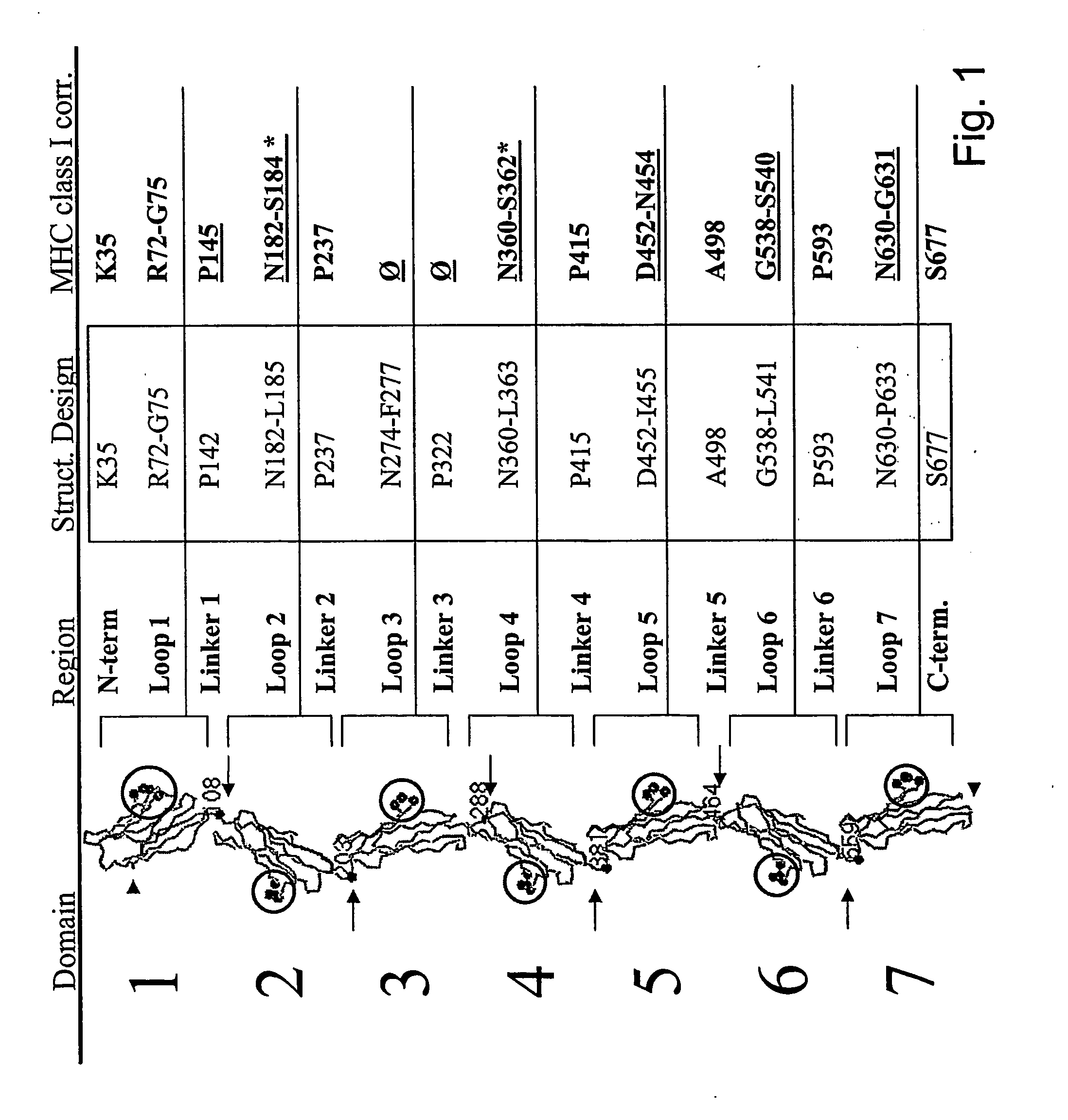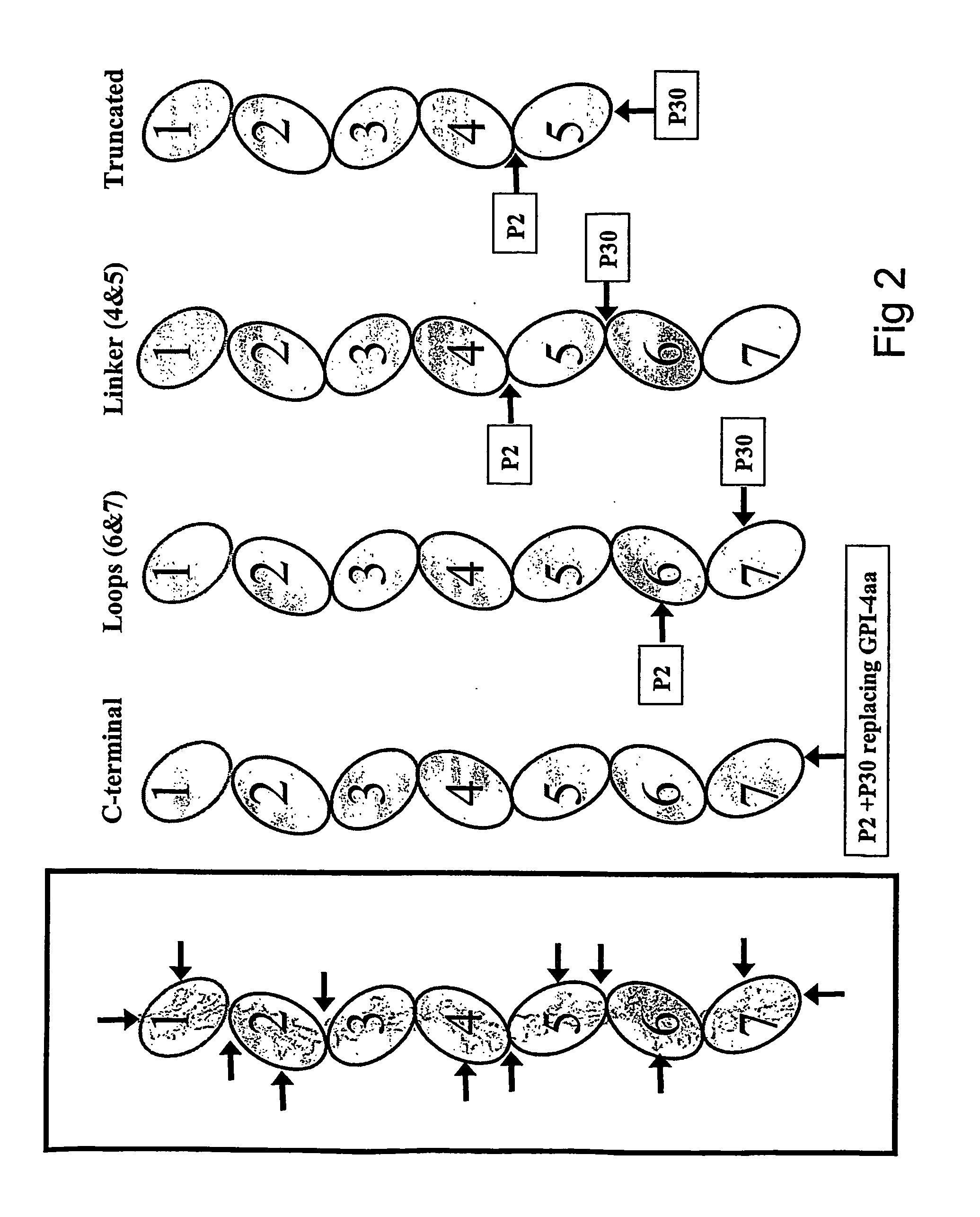Immunogenic CEA
a technology of immunomodulatory cea and serum, which is applied in the field of immunomodulatory cea, can solve the problems of difficult to use serum cea determination as a sensitive method for cancer screening, disorganised growth and movement of malignant cells, and destruction of antibody-marked cells, and achieve the effect of effective immune respons
- Summary
- Abstract
- Description
- Claims
- Application Information
AI Technical Summary
Benefits of technology
Problems solved by technology
Method used
Image
Examples
examples
[0228] CEA DNA Constructions.
[0229] Modified CEA constructs are designed and constructed as generally and specifically described above utilising standard protocols known in the art.
[0230] For use as DNA vaccines, the DNA encoding modified CEA can thereafter be directly cloned into suitable, commercially available DNA vaccination vectors such as pcDNA, pHP, pCI etc.
[0231] Expression and Purification of CEA Proteins
[0232] A variety of expression systems could be employed in order to generate recombinant modified CEA polyptides. This includes expression systems based on e.g. bacterial, insect cells, yeast and mammalian cells. In either system, stable lines and / or clones will be established and grown in suitable volumes for protein production. Various protein purification methods (e.g. precipitations and chromatographic methods such as gel filtrations, affinity chromatography, ion exchange chromatography, HPLC etc.) can be used to purify CEA proteins. If necessary, refolding procedures ...
PUM
| Property | Measurement | Unit |
|---|---|---|
| Time | aaaaa | aaaaa |
| Fraction | aaaaa | aaaaa |
| Fraction | aaaaa | aaaaa |
Abstract
Description
Claims
Application Information
 Login to View More
Login to View More - R&D
- Intellectual Property
- Life Sciences
- Materials
- Tech Scout
- Unparalleled Data Quality
- Higher Quality Content
- 60% Fewer Hallucinations
Browse by: Latest US Patents, China's latest patents, Technical Efficacy Thesaurus, Application Domain, Technology Topic, Popular Technical Reports.
© 2025 PatSnap. All rights reserved.Legal|Privacy policy|Modern Slavery Act Transparency Statement|Sitemap|About US| Contact US: help@patsnap.com



